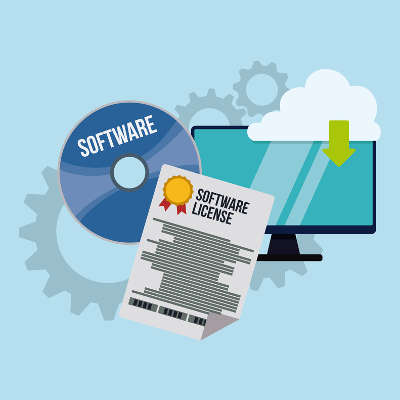4 Ways a Unified Threat Management Solution Covers Your Company’s Security Needs

Your company’s network contains a gold mine of sensitive information that you need to protect at all costs. While it’s absolutely the case that you need to make network security a top priority for your business, thankfully, multiple aspects of your security can be covered easily enough by implementing a single, enterprise-level security solution.
The solution we’re referring to is a Unified Threat Management (UTM) tool. It’s a powerful tool that combines the fundamental security features that every business needs, into one easy-to-manage package. If you’re looking to get a handle on your company’s network security, then consider these four ways that a UTM provides comprehensive protection.
Firewalls
A firewall is the first line of defense for your company’s network, protecting your business from the onslaught of online threats trying to sneak their way in. One can go so far as to compare a UTM firewall to a sort of virtual bouncer for your network that; assesses the threat level of your network’s traffic, garners if it’s a security risk, and then clears for passage only what’s deemed to be safe.
Antivirus
Every good firewall needs an antivirus solution to compliment it. After all, some forms of malware are sneakily engineered to play on a user’s ignorance so as to bypass the firewall. In such a scenario, antivirus software is there to quickly catch and eliminate threats such as viruses, trojans, spyware, ransomware, and more. Given the destructive nature of many of these threats, you’re going to want a powerful antivirus solution in place that prevents such viruses from spreading across your network and wreaking havoc on your systems. Additionally, while there are many kinds of antivirus solutions on the market, businesses will want to take advantage of a centrally located antivirus solution like what comes with a UTM. This way, updates and scans can be done automatically and in one fell swoop, instead of being left up to each individual user.
Spam Blocker
Having spam in your inbox is totally annoying, and it can also be dangerous. One common way for hackers to spread malware is by attachments found in spam messages. Plus, savvy hackers will employ spam as a phishing tactic to trick users into opening the message and following its instructions which appeal to emotions. Examples include a fake summons to jury duty, a fake package that couldn’t be delivered, a fake resume for a job opening, etc. A quality spam blocker will prevent these messages from hitting employee inboxes in the first place, which greatly reduces the risk of a user being tricked by spam.
Content Filter
Businesses also need a way to protect their networks from the vast amount of online threats that come from visiting dangerous websites. Unfortunately, it’s all too easy for an employee to stumble upon a website that’s designed to harvest credentials or download an attachment designed to infect your network with a virus or even ransomware. With a content filter protecting your network, you’ll be able to block users from accessing suspicious websites in the first place. Additionally, a UTM content filter allows you to block time-wasting websites like social media, YouTube, Netflix, etc., making it a valuable tool that both protects your network and enhances productivity.
In order to be adequately protected, your business needs all four of these security features. A UTM from Catalyst Technology Group conveniently offers your network protection in all of these ways, and more. To equip your network with a UTM security solution that’s customized to fit the needs of your business, call us today at (317) 705-0333.
Lowlife Ransomware Hackers Now Asking for More Than $1k Per Attack

Ransomware remains a very real threat, and is arguably only getting worse. Attacks are now able to come more frequently, and there are opportunities for even relative amateurs to level an attack against some unfortunate victim. However, this is not to say that there is nothing you can do to keep your business from becoming another cautionary tale.
Ransomware, in review:
First of all, it’s important to understand exactly what ransomware is. A form of malware, ransomware will infect your system and encrypt your data. It gets its name from the fact that the attacker will demand a ransom in order for your data to be decrypted. What’s worse, if you pay, you’re taking the distributor at their word that they will decrypt your data once the money has changed hands.
Understandably, this form of ransomware can be a highly potent weapon against many users, who simply won’t know how to handle the situation beyond paying and hoping for the best. Of course, since the motives behind ransomware are financial, a lot is directed towards business targets, as they not only have more funds available but are also heavily reliant on their data to function.
Ransomware repercussions
The nature of ransomware means that those that distribute it can usually name their price for the decryption key. After all, it isn’t as though victims have anywhere else to turn other than the hacker (or so the hackers want them to believe). Due to this, ransoms for encrypted data have shot up–in 2015, the ransom to decrypt an infected computer would cost about $ 294, on average. That price had jumped to average $ 1,077 per computer in 2016.
In addition to this increase in ransom demands, there was a 36 percent higher rate of ransomware attempts between 2015 and 2016, 68 percent targeting consumers. This left a still-considerable 32 percent being leveraged towards businesses.
Does it get worse? Sure does.
As if it wasn’t bad enough already, ransomware is now able to be utilized by just about anybody who has a grudge or a desire for some extra cash. Ransomware is now offered as-a-Service, allowing an attack to potentially come from far more sources than before. Some variants of ransomware, such as Karmen, will only cost an aspiring cyber criminal $ 175 to cash in on.
Thankfully, there are steps being taken to eliminate the threat of ransomware. For instance, there are decryption tools to help undo the damage that Karmen can cause because it was derived from the open-source ransomware project Hidden Tear. Other tools and resources are available to help identify which ransomware has infected a given system, like this one from security researcher Michael Gillespie.
However, there are also steps that you can take to avoid a ransomware infection, like following best security practices and computing mindfully. Catalyst Technology Group is here to assist you in putting these procedures in place, as well as helping you recover should ransomware strike. Give us a call at (317) 705-0333 today.
Tip of the Week: Did You Know Microsoft Word Calculates Math Equations?

You know Microsoft Word as a word processor that lets your organization compose documents. Yet, you may not know the extent to which you can use this application. You might be surprised to hear this, but you can even perform mathematical calculations using Microsoft Word!
First, you’ll need to open up a new document in Word. This will be your playground throughout the duration of this blog article, so feel free to try out this process as we walk you through it.
Look in the All Commands tree for the Calculate command. You can find it in File by navigating through Options.
The next step is to use the Quick Access Toolbar to find All Commands. You want to add the Calculate command to the Quick Access Toolbar for easy access.
Once this has been done, you’ll be able to solve an equation that you’ve typed out. All you have to do is highlight it with your cursor.
To put this new mechanic to the test, just type something basic like =4+4 into the document. Once you’ve highlighted the equation with your cursor, click the Calculate command that’s now located in your Quick Access Toolbar. You’ll now see the result of the calculation at the bottom of the screen in the left-hand corner, where you would normally see the number of words in the document.
That’s about as simple as it gets. This lets you stay in your Microsoft Word document without exiting just to go to your calculator application. In fact, many other apps that you have will also have hidden features that let you do more than meets the eye. For example, Microsoft Excel can also perform a variety of mathematical functions within its spreadsheets. All of this cross-functionality is one of the main reasons why a productivity suite like Microsoft Office 365 is so helpful for SMBs.
What other hidden tricks found in Microsoft Word can you think of? Let us know in the comments, and be sure to subscribe to our blog for more great tips.
Why Properly Managing Your Software Licenses Should Be a Priority

Every software your company uses comes with a license, even freeware like Google Chrome and Firefox. Often times, you’ll see the license during the installation process when you’re asked to opt into the terms and conditions. We know how easy it is to blow through the pages of legal mumbo jumbo, yet, at the very least you should have a grasp of the details pertaining to the license.
By ignoring such important information, you very well could be setting yourself up for trouble down the road.
Understanding Software Licenses
Software developers are the ones that determine the licensing details of their product, which includes terms such as where and how often you can install the software, whether or not you can redistribute it, what modifications are allowed, and more. By going through with the software installation process, you’re agreeing to these terms. This grants you use of the software, as well as holds you and your organization responsible should any of the terms be violated.
Protection from having the software shared and distributed without the developer’s consent (aka, theft) is one of the most common clauses found in software licenses. Additionally, if you read the fine print closely, you may spot some rather unusual terms. One of the more famous examples comes from Apple, which forbids iTunes users from creating missiles and nuclear weapons.
How Negligence Can Lead to Big Fines
For many programs, at the time of installation, the software is activated and automatically sends a message to the developer in order to authenticate the license. During this activation process, one thing that the software checks for is whether or not the particular license has been installed before, or if it’s active anywhere else. If this is detected, you won’t be allowed to proceed and use the software. In some scenarios, you may be able to still use the software and you won’t find out you’re doing so illegally until your mailbox is hit with a cease and desist letter from the developer.
Although, this worst-case scenario isn’t something to be too worried about. Typically, developers have protocols in place that allow them to catch this discrepancy and provide users with an offer to purchase additional licenses. In some cases, a business owner may even be offered
a site licensing deal which allows for the purchase of multiple licenses at a discount.
Software Auditors Want to Talk With You
One motivation for making sure your software licenses are all in order is the very real chance of an audit by a group like the Business Software Alliance (BSA). This is an organization tasked with looking into businesses suspected of abusing software licenses, like running multiple copies of Windows and Microsoft Office off a single license. Should you be found guilty of such an infraction, you’ll receive a letter in the mail that will pretty much ruin your day.
Now, you may be wondering how the BSA can even find out if a business is violating software licenses. Well, one tactic employed by the BSA is to offer whistleblowers that report software violations by their current or former employer thousands of dollars in rewards, along with full confidentiality. It’s a method that can really be effective if a particular business has any former employees that may be rather disgruntled.
Failing such an audit can lead to a major fine that ends up being way more than what it would have been to simply pay for the software licenses in the first place; or, worse yet, jail time. If you happen to receive such a letter accusing you of software license violations, then you’ll want to seek the counsel of a lawyer and the assistance of an IT professional.
How to Prevent Software License Mismanagement From Ruining Your Day
As is the case with the majority of technology-related woes, a proactive approach to managing your software licenses is the best way to prevent this problem. This includes documenting your software licenses. When doing so, be sure to keep information up to date like, how many users you have, who is using it, how many devices the software runs on, and where it is deployed. You’ll also want to track the expiration dates of all of your software licenses, along with the terms and conditions. Plus, be mindful that a typical software license will allow for a single user to install the software on perhaps a few different devices, like your workstation and home PC–which is NOT the same as splitting a single license with two different users.
It’s understandable how easy it is to overlook software licenses. However, software licenses are a necessary part of doing business, allowing for developers to protect their product so they can in turn create better versions of the software you use every day.
To understand the status of your company’s various software licenses, a good first step is to have Catalyst Technology Group perform a network audit. We’ll be able to investigate the compliance of your software, and take action to make sure that your business is in good standing. For help managing all of your company’s technology needs, call Catalyst Technology Group today at (317) 705-0333.
The Cloud Revolution Seems a Bit… Familiar

If we asked you what the most significant trend in today’s professional environment is, what would you say? For those who depend on technology to manage and maintain their operations, the cloud has allowed for some of the biggest and best advantages–so much that it’s perhaps one of the most prominent shifts that the world has ever seen.
How the Cloud Works
In essence, the cloud is a term that applies to any off-site computing done by your organization. It’s not far from the reality of the situation to suggest that cloud-based services work by using someone else’s computer to store and process applications and data.
The cloud provider rents their computing resources to you. Depending on their service model, you’ll receive services for a cost based on how much you store, how much power or bandwidth you need, or how many accounts must access it. The cloud provider needs to adhere to these guidelines if they want to keep you as a customer. Furthermore, safety and security are also required, as nobody wants to have their data stored in a place where it’s susceptible to theft. Finally, the cloud provider needs to be able to provide you the services at a rate that’s cheaper than if you were to find a way to accomplish the same thing on your own. This is a considerable amount of information to think about, especially with the other costs involved.
The most important features to think about are how much uptime and security are offered, as both are required by any organization. The problem is that achieving the required results on your own is difficult for an organization with a limited IT budget, making outsourcing to a cloud provider quite ideal. It’s a way to manage risk; you won’t be burdened by unexpected costs in the event of trouble, as it’s the responsibility of the managed service provider and not your organization.
However, the cloud service provider needs to do much more than manage a single computer. Instead, it’s managing many hundreds or thousands of virtual computers stored in a data center, all of which need to be maintained. Since they are being stored in bulk, the cost per unit drops, but security becomes an even larger challenge. Meanwhile, the cloud provider is capable of investing in more expensive and top-shelf solutions that your business might not be able to afford on its own. The end result is enhanced security and capabilities alongside technology that allows organizations to keep up with major industry trends–without the hefty price tag.
This Isn’t the First Time
If all of this sounds familiar, it’s because this isn’t the first time that technology completely revolutionized the business environment. Back in the 1890s, before computers and cyber security were even pain points for organizations, business owners had to worry about how to power their site of operations with electricity. Factories used expensive on-site generators that could hardly be called efficient, and they were all but impossible to maintain without going out of your way to do so. Some employees needed to remain on-site just to ensure that operations didn’t stop due to a generator malfunction, simply because the organization couldn’t afford to allow productivity to halt, even for a few minutes.
This all changed when the Edison Power Company in Chicago found a better way of doing things. With the ability to provide reliable and clean electricity to factories at a more affordable rate, they were able to completely change the way organizations were run. The cost per unit became much cheaper, as the Edison Power Company found they could maintain their infrastructure by employing specialized technicians who focused on the upkeep of this equipment. 20 years later, you’d be hard-pressed to find an organization that didn’t utilize the power grid in some way.
How the Cloud is, More or Less, the Same Thing
Can you imagine producing the bulk of your organization’s electricity in-house? While this might lead to humorous imaginary situations, like hamster wheels or treadmill desks, such a notion would be absolutely silly. The same thing can be said for the cloud and your organization’s IT infrastructure. The fast-paced shift from on premise servers to cloud-based virtualization, along with the mobile device infestation, has made way for organizations to shed their traditional server and desktop infrastructure altogether in favor of a more streamlined virtual approach. With the cloud, your business will be able to implement solutions like email, document management, line-of-business apps, and so much more, all for a lower cost with enhanced security functionality.
In fact, some future-minded organizations have already begun taking advantage of this shift in ways previously unheard of. Instead of managing in-house servers and desktop workstations, these organizations host their infrastructure in the cloud, allowing for greater flexibility and energy saving costs. It’s just one way that the shift toward cloud computing is helping organizations achieve their maximum potential.
How will your business take advantage of the cloud? If you’re not sure, call us at (317) 705-0333. Catalyst Technology Group’s trusted technicians want to make sure that your business’s technology infrastructure doesn’t skip a beat.
The Fallout From Data Loss Isn’t Pretty

Data loss: it’s not a fun term for any business to hear. However, when one considers all of the ramifications that data loss can have upon a business, it swiftly transitions from “not fun” to “alarming.” Have you taken the time to think about what losing your business’ data would really mean for your company?
Downtime
There’s a reason that ‘downtime’ is considered a dirty word in an IT professional’s vocabulary. A loss of productivity is quite literally the opposite of what a company’s IT solutions should deliver. However, if a data loss incident were to occur without any mitigating measures in place, downtime is essentially guaranteed–along with all the negative consequences that it brings along with it.
These consequences include the financial impact that downtime will have on your business directly. After all, your business will not be able to generate revenue throughout the downtime incident, which means that the total amount you would have otherwise earned can be considered a cost. Combine that with the financial amount it takes to return to operations, as well as the potential business that has now been lost due to the downtime incident, and the sum total quickly becomes considerable.
Data Leakage
Of course, when considering data loss, the “why” needs to be established. If the answer involves your data storage being compromised by an outside party, you need to consider what data was lost. If it just so happens that personnel records were breached, exposing your employees’ personally identifiable information, or your customers’ financial data, you will almost certainly have some major problems on your hands.
Destroyed Reputation
Look at it this way: would you trust a company that had allowed your personal data to be stolen, putting your livelihood and good name at risk? In fact, would you trust a company that had allowed anyone’s personal data to be stolen? Probably not, and guess what? Your potential clients and customers feel the same way.
Whether they’re an existing client whose data was breached, or a prospect who heard about your issues with data security, there’s a good chance that they will lose any faith in your ability to protect their information. Therefore, existing clients will jump ship, and prospects will quickly turn to other options. Perhaps worse, those who were affected by your data loss will likely vent online, preventing many from ever approaching your business afterwards. While there are ways to mend fences with these clients, they are all expensive.
Clearly, data loss is something that no business is truly prepared to experience, which is why we’re here to help prevent it. To learn more about how Catalyst Technology Group can help protect your company’s data, give us a call at (317) 705-0333.
2-in-1 Mobile Devices Give Businesses the Best of Both Worlds

As computing and business have become more intertwined, it has become more important for software solutions and other business-essential tools to be ready at a moment’s notice. This tendency has contributed to the rise of mobile solutions, although there is still a need for the power a desktop provides. That’s why we are big fans of convertible ultrabooks, or 2-in-1 devices.
These versatile solutions offer the best parts of both mobile and desktop computing experiences, and are right for the business user.
Consolidation and Cost Savings
Perhaps most important to many business users is the potential cost savings that a convertible laptop brings with it. Since it serves as both a laptop and a tablet, you can avoid shelling over additional funds to supply your workforce with both solutions. Plus, since it can serve as a desktop workstation when it has been docked, a single device could foreseeably fulfill every computing need your employees have.
Functionality
Windows 10 was specifically designed to work with 2-in-1 devices. This is why the transition from laptop to tablet is comparatively seamless, and running multiple applications is equally simple. It also should be said that these devices have the power to do anything that a typical laptop can handle.
This does mean that most 2-in-1s won’t meet the standards that serious graphic designers, video editors, or similar occupations will demand of them, but there are even a few options that will fit the bill for this level of use. Some 2-in-1s will include a built-in stylus for exactly this purpose.
In addition to the abilities that the devices themselves boast, they also permit the user to interact with them in the way that the user prefers–namely, whether to use a mouse or the touchscreen. This is especially important, considering the prevalence of touchscreen-based devices in everyday life. This functionality in a 2-in-1 solution means that habits from the rest of life are more easily translated over to work computing, boosting productivity and enhancing efficiency.
Flexibility
This benefit is a pretty straightforward one: a 2-in-1 device can adapt to serve pretty much any purpose you could have in the office environment. Whether you need a laptop to type at or a quick video screen to showcase a presentation, these devices can do it all, and then some.
If you agree with us and think that 2-in-1 devices may just be the best choice for your business, give us a call at (317) 705-0333.
Tip of the Week: Looking to Free Up Hard Drive Space? This Free Tool Can Help

No matter how much we wish it weren’t so, all PCs have limited amounts of storage space on them. This means that the user will eventually run out of space, and they will have to find a way to resolve this issue as soon as possible so as to avoid unsaved work. Plus, your performance will take a hit, so it’s best to look for a way to resolve this issue. Thankfully, a free tool like WinDirStat can help you free up space by identifying where all of your free space is being taken up, and how you can make some wiggle room with your PC’s largest files.
Before we dig into the details, we want to add a disclaimer about deleting any large files that might be on your company-provided computer. Users should always check with a company’s IT administrator before deleting anything large like this on their PC. By doing so, you could avoid accidentally deleting files and apps that are crucial to your organization.
The Windows Directory Statistics, or WinDirStat, is a tool that lets you see a visual “treemap” of how the space on your hard drive is being used. To download this free app, just go to the developer’s website: https://windirstat.net/download.html
When you first open up WinDirStat, the program will read your drive’s directory tree and show you three displays:
- Directory List: You’ll see what looks like a tree view of Windows Explorer, but it will be sorted by file type and subtree size.
- Treemap: You’ll be shown the entirety of the directory tree.
- Extension List: This shows statistics regarding file types.
Each of these files are represented by colored rectangles, and the size is proportionate to the file’s size. You will notice that these rectangles are arranged by directories and subdirectories. Therefore, the rectangles will be proportionate to the size of the subtrees. Additionally, the colors of the rectangles will indicate file type, and you can use the extension list to find the color that you’re looking for.
With this knowledge in mind, you’ll be able to make the best decisions possible regarding which files you want to delete to free up space for other uses However, you still need to be wary that deleting this files isn’t the only option at your disposal. Deleting large files that could hold value, like a video, simply because you don’t access it frequently, would be foolish. It’s ideal to simply get it removed from your drive through the use of an external drive, a network drive, or the cloud.
Granted, if your goal is to free up hard drive space and improve the way that your PC functions, you’re better off reaching out to professional technicians like those at Catalyst Technology Group. We can help your organization get the most out of its technology solutions, including your data storage procedures, reach out to us at (317) 705-0333.
Because Busy Business Owners Shouldn’t Have to Worry About Technology

A business without its own IT department will expend vast amounts of time and resources to manage its technology. Tasks like managing your email solution, upgrading or managing your desktop infrastructure, or securing your network from threats, can be draining. If you don’t have time to perform these tasks, then it’s worth it to invest in an outsourced IT provider for your technology needs.
Many organizations are faced with an increasing need for technology maintenance like never before, and they are turning their attention toward third party technology management brought to them by managed service providers. At first, this proposition might sound a bit strange. It’s difficult to justify purchasing services when you can just do them yourself. However, you’ll find that the long-term cost savings will far outweigh any costs associated with managed IT, and you’ll save both time and resources that can instead go to better purposes.
In other words, rather than spend time managing your organization’s technology, you’ll be able to focus more on running your business.
Granted, there is the option of hiring an internal IT department. Although, after looking closely at this expense you may find that this move could eventually become much more of a long-term cost than investing in an outsourced managed service provider. Paying multiple salaries could easily become much more of a problem for your budget than a simple monthly payment to a managed service provider. It’s a simple choice, but you need to consider your business’s unique needs before making it.
Some organizations believe that managed IT means giving up control over your IT infrastructure, but this is simply false. A good managed IT provider like Catalyst Technology Group will make every effort to create a transparent, trusting relationship with your organization. We believe that cooperation is the key to unlocking your business’s full potential, and a proper technology strategy is the best place to start. A proactive technology policy will be able to help you keep your operational infrastructure in proper working order.
As a managed service provider, Catalyst Technology Group offers the following services for your business:
- Network security management
- Email management
- Hardware and software procurement
- Remote maintenance and management
- Backup and disaster recovery
- Help desk support
- And more!
Does your business want to leverage technology to the best of its ability? If so, reach out to us at (317) 705-0333.
Looking to Boost Productivity and Capital? Outsourced IT Can Help

There are a lot of moving parts in a business, but overall the goals are simple. If you make more money than you spend in operational costs, you’re considered a success story. However, it’s not always easy to achieve this balance–especially when you’re a small business with a limited workforce and budget. How can you cut costs and increase your bottom line?
One of the biggest things holding back smaller organizations is the need to invest large sums into expensive operational necessities, which inevitably leads to less flexibility in the face of critical business decisions. If your budget is stretched to the maximum, you won’t have the funds required to respond to an emergency situation, like a hardware failure or other similar catastrophe. This is a tricky situation to get out of, and it might require some creative cuts to your budget in order to just get by. This isn’t how you want to manage something as critical as your business’s budget.
Modern businesses rely on technology solutions in order to maintain acceptable levels of productivity and efficiency, and we at Catalyst Technology Group want to help your business achieve greater heights by offering managed IT services. SMBs have to invest a lot of time and resources into their technology infrastructure, but we can make it more affordable through proactive maintenance and management, providing more time for your organization to stay productive and efficient.
How Managed IT Works
Catalyst Technology Group’s managed IT services work by providing your organization with a single point of contact for all of your technology needs. This includes knowledgeable consultants and trained technicians that can help you make informed decisions regarding your IT infrastructure. Here are some of the core services that we offer:
- Network monitoring: Thanks to our expertise and a certain level of automation, Catalyst Technology Group can keep close watch on your network to prevent issues from evolving into downtime-causing problems.
- Backup and disaster recovery: Too many businesses believe that their data isn’t important enough to warrant a backup solution. Keep in mind that the success of your organization is heavily dependent on your ability to access information that you’ve gathered over the years, including internal records and client information. You need to safeguard these important assets so that they can survive even the most devastating disasters, like a fire, flood, or even a cyberattack.
- Cloud-based services: One of the biggest capital expenses organizations have to deal with comes from upgrading their computing infrastructure. By this, we mean all of the critical business applications that you use on a daily basis. Cloud-hosted versions of these software solutions are always up-to-date, and they are generally cheaper per user on a subscription basis compared to the expenses of software licensing. All-in-all, cloud computing can be used to cut costs in regard to email hosting, data storage, and even virtualization, allowing you to improve operations while eliminating unnecessary costs.
Long story short, managed IT is capable of removing unnecessary costs from your budget, while improving operational efficiency, allowing you to better spend your assets elsewhere. With Catalyst Technology Group on your side, you’ll be able to properly leverage new and innovative solutions to save money and get the leg up on your competition. To learn more about managed IT services, reach out to us at (317) 705-0333.

